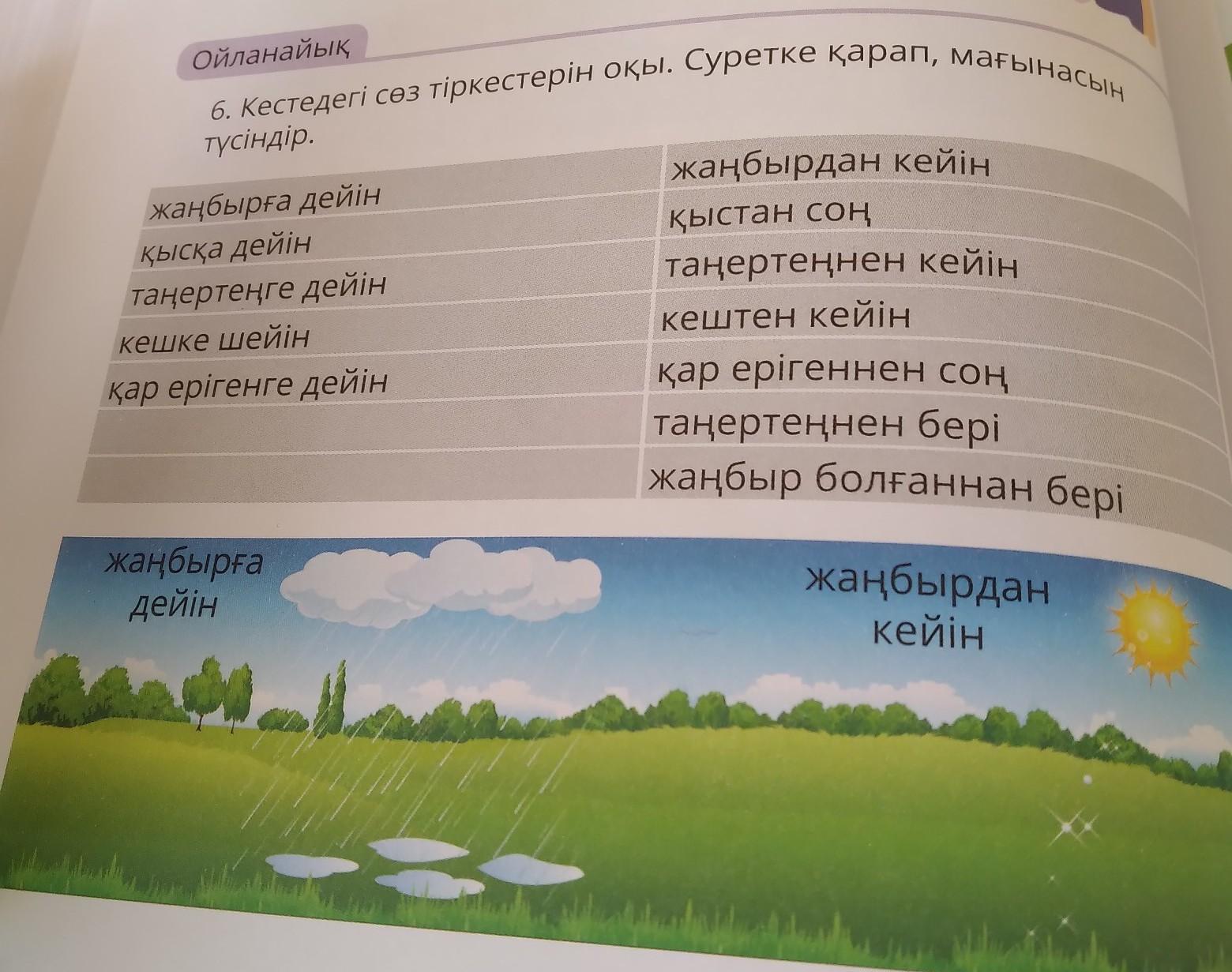Предмет: Қазақ тiлi,
автор: gajdarovalaura9
Ойланайық 6. Кестедегі сөз тіркестерін оқы. Суретке қарап, мағынасын түсіндір.
Помогите) я не понимаю)
Приложения:

gajdarovalaura9:
Пж срочно
Помогите!!!
Пж
Не могу!!;(
Быстрее!!
уже есть ответ
Ответы
Автор ответа:
10
Әр іс тен кейн бір нәрсе өзгереді және табиғыт өзгереді мысалы қар ерімей тұрғанда айнала аппақ болған кар ерігенсоң жердің беті су болады, таң ертенге дейн айнала қараңғы болса таң ертеннен кейн айнала жарық болады.
Объяснение:
Я так понимаю) если не помог беза
Спасибо!
Помог(ла)
Спасибо ещё раз спасибо ещё раз спасибо еще раз спасибо еще раз спасибо еще раз!
(✪‿✪)
(◉‿◉)
спасибо рахмет
помогла отлично
Похожие вопросы
Предмет: Русский язык,
автор: Аноним
Предмет: Английский язык,
автор: devineWlliver
Предмет: Английский язык,
автор: AlENvinfelenka
Предмет: Математика,
автор: likaaaaaaa54
Предмет: Английский язык,
автор: svetlana379